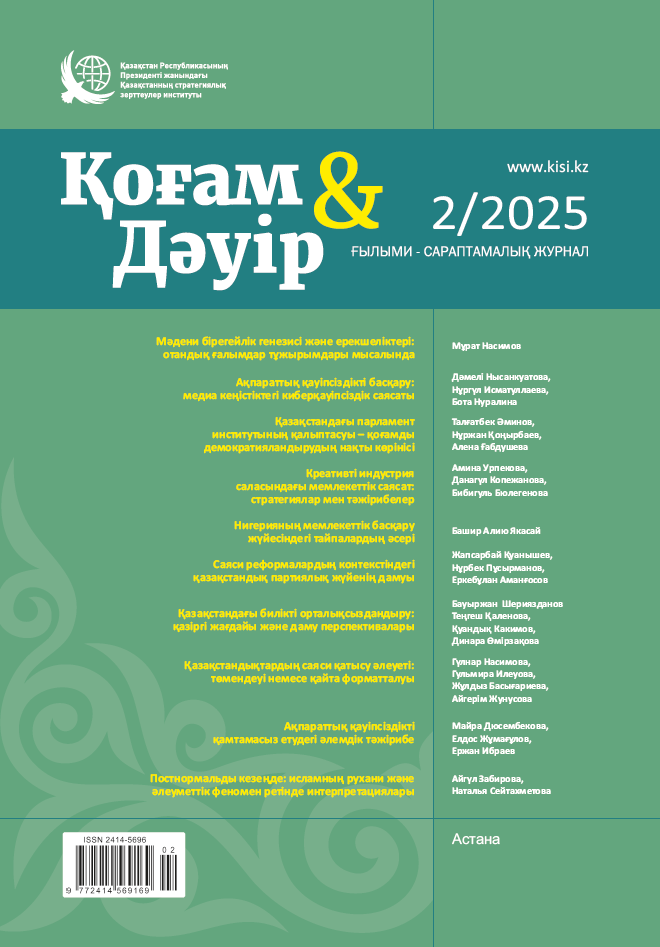Abstract
The creative economy has become a key driver of economic growth and social transformation in various countries worldwide. This article examines government strategies for supporting creative industries using case studies from the United Kingdom, South Korea, Canada, Indonesia, and Kazakhstan. It analyzes mechanisms of state support, the role of government in sector development, export strategies, and key challenges. The study identifies three primary models of public policy: market-driven (United Kingdom), centralized (South Korea), and socially-oriented (Canada). The findings provide valuable insights for developing effective public policies in creative industries in Kazakhstan and beyond.


